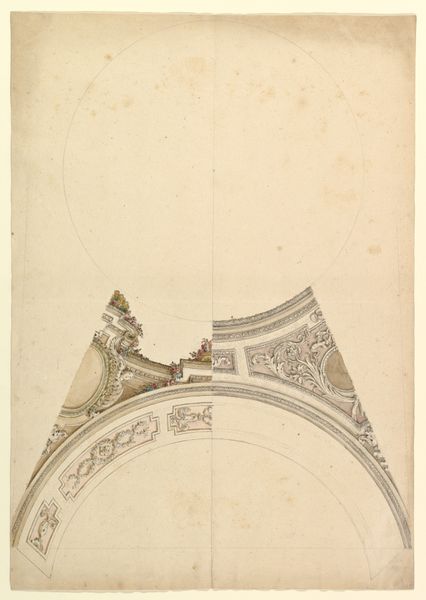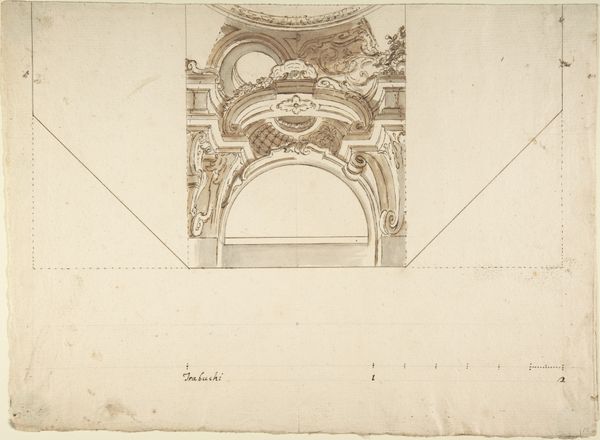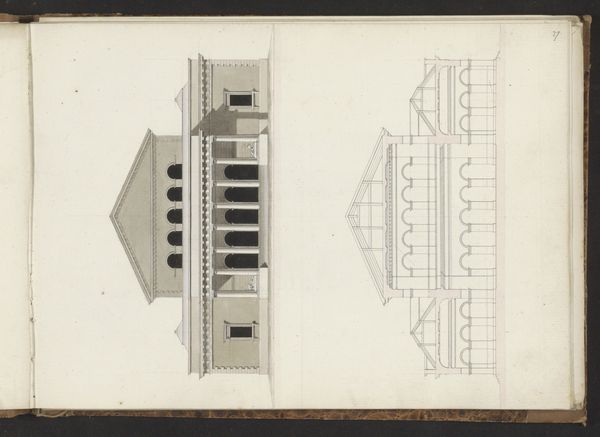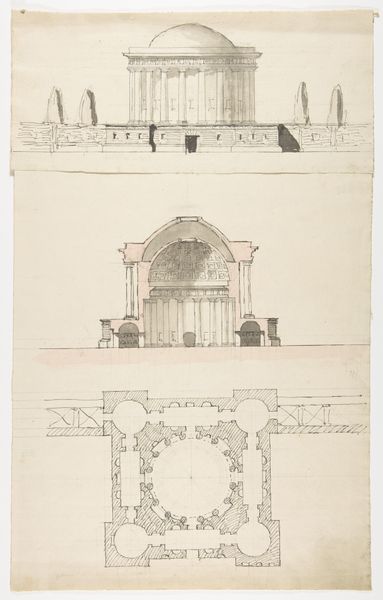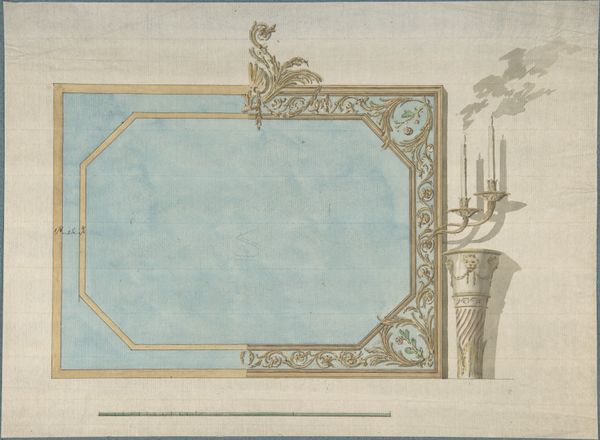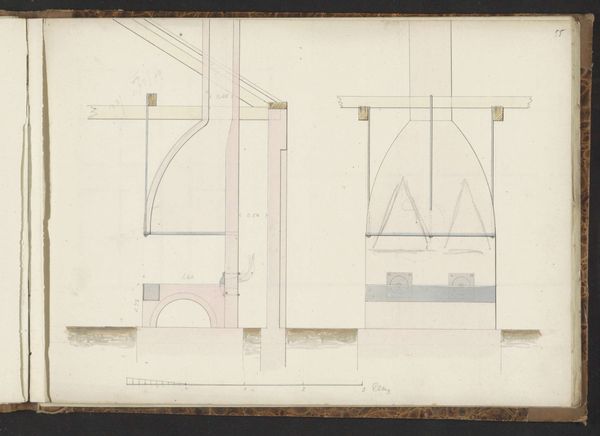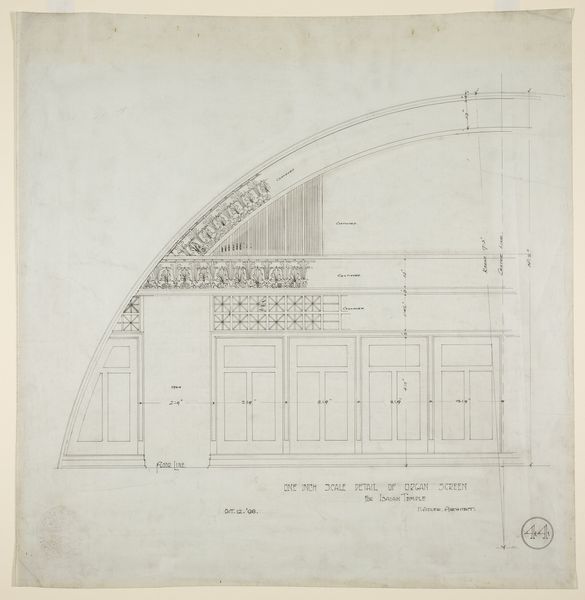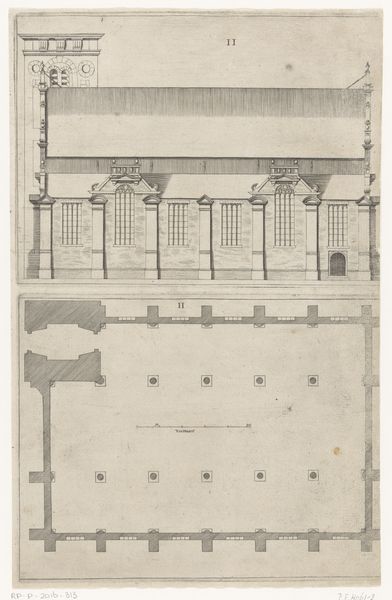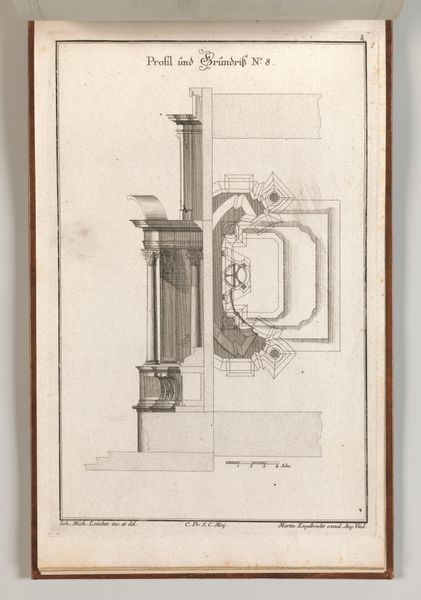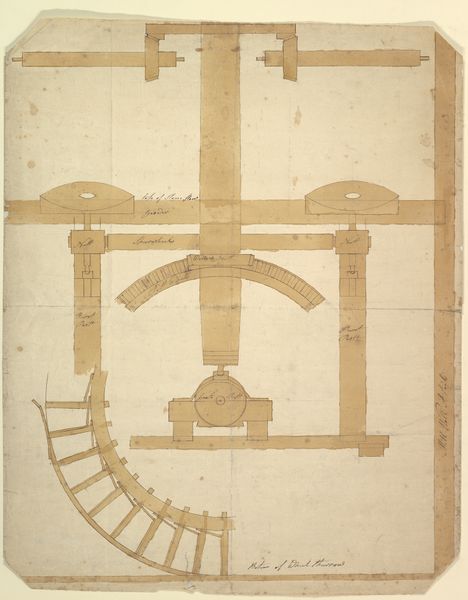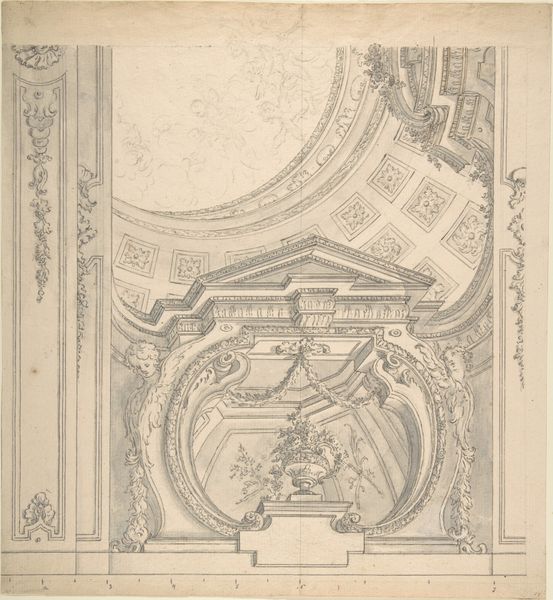
Perspectival study for one quadrant of a ceiling design including a trompe l'oeil balustrade 1850 - 1900
0:00
0:00
drawing, print, watercolor, architecture
#
drawing
# print
#
landscape
#
classical-realism
#
perspective
#
watercolor
#
arch
#
cityscape
#
watercolour illustration
#
trompe-l'oeil
#
academic-art
#
watercolor
#
architecture
Copyright: Public Domain
Curator: What an interesting study of perspective. Jules-Edmond-Charles Lachaise, most likely sometime between 1850 and 1900, crafted this trompe l'oeil watercolor drawing to plan a ceiling design. What strikes you about it? Editor: Well, right away, I feel like I'm peering over the edge of something. Vertigo, maybe? It’s like the blueprint for a grand illusion, a sky trying to burst through a stony frame. I love that pale blue. It suggests an infinity beyond the architecture, or perhaps a serene, slightly unsettling void. Curator: Precisely! The artist employs an architectural technique meant to "fool the eye", suggesting spaciousness where there might be a flat surface. The balustrade detail mimics classical architecture; notice the repeated shapes evoking antiquity? It's interesting how these patterns persist over time, don’t you think? Balustrades still evoke an enduring sense of history, beauty, and status. Editor: Oh, totally. It’s classical, yes, but something about that rigid formality paired with the illusion of infinite space also gives it a melancholy vibe. It's almost as if the balustrade represents our earthbound constraints while the blue represents the unachievable ideal. Makes me think about human ambition, you know? To grasp something just beyond reach. Curator: Yes, and the rendering also creates an interplay between order and freedom, the solid versus the ephemeral. I imagine the architect using calculations and geometric shapes to create that optical effect. The cityscape is hinted, yet it is incomplete, further augmenting the sense of possibility. We observe cultural echoes of this "open ceiling" theme in many periods. Think about the oculus in the Roman Pantheon or in Andrea Mantegna's paintings... Lachaise takes part in an old ambition: using artistic skills to touch something far beyond us. Editor: That’s true! But thinking about touching the divine reminds me that fooling the eye with architecture… it's a very human thing, right? Almost like we’re constantly trying to rewrite reality, improve on it, or escape it somehow. Curator: Indeed. By contemplating how symbols function within visual culture, we reflect upon history and humanity’s deepest aspirations. The eye is powerful because it leads the spirit. Editor: Agreed. There’s something wonderfully bittersweet about seeing the bones of that ambition laid bare. So lovely!
Comments
No comments
Be the first to comment and join the conversation on the ultimate creative platform.

